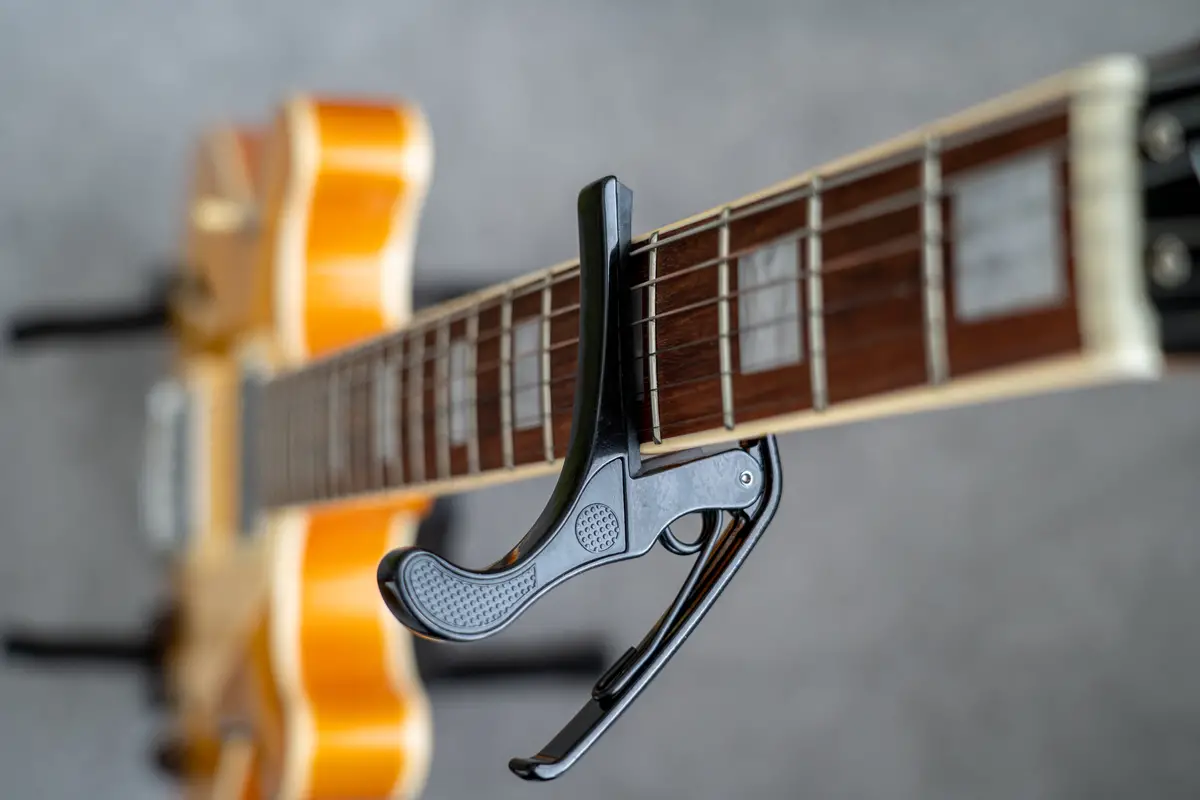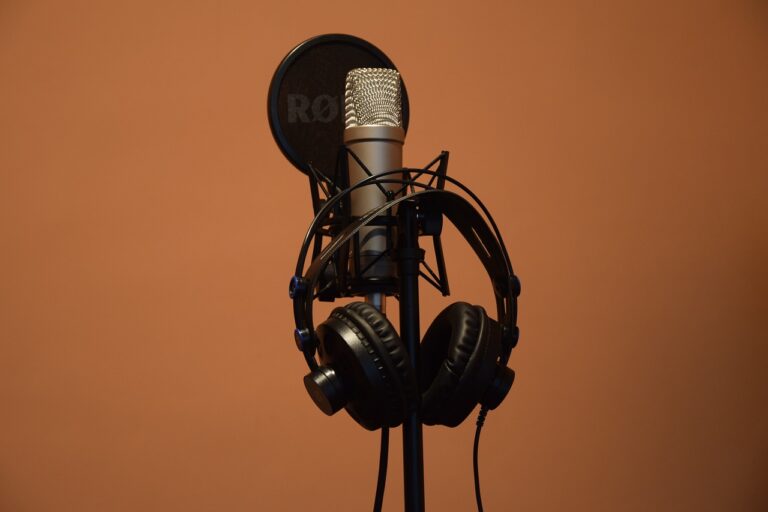How To Switch Distributors Without Losing Stream Counts or Playlists
It’s time to end it with your music distributor. You had a great (or not-so-great) run together, but you’ve drifted apart. Unfortunately, your hands are tied. You stand to lose streams and lucrative playlist spots if you leave.
How can you switch distributors without losing stream counts or playlists?
By re-releasing your music through your new distributor before cutting the ties with your current one, you can ensure that your playlist spots and stream counts stay in place. It is also vital to keep track of important codes associated with your music so streaming platforms continuously recognize them.
Thankfully, the process has become easier than it once. While switching distributors was a nightmarish hassle just ten years ago, streaming platforms have improved. The likes of Spotify, Apple Music, and more know that artists switch distributors all the time.
Let’s dive into how to switch distributors the right way — without losing the revenue from your top-earning tracks.
What is a Music Distributor?
It might seem like a silly question, but it’s worth going over exactly what a music distributor does.
When we use the term “music distributor”, we’re talking about music distribution platforms. But the former term saves a couple of syllables while meaning mostly the same thing.
A music distributor isn’t a person, although a person may have been the one to convince you to join. Instead, it’s a platform designed to provide artists with a digital audience.
However, there are countless distributors out there these days pledging to offer something different from the competition. The premise is generally the same for all of them: they pay you royalties, and you pay a subscription to keep your music on the platform.
Ideally, you’ll earn more than enough to cover the fee. Unfortunately, reality doesn’t always work out to this ideal. Sometimes, you might end up with a distributor who does little to justify their expense to you.
What Does a Music Distributor Do?
Again, this seems obvious. A music distributor distributes music. However, it’s easy to lose sight of what it is they’re supposed to do, exactly.
You pay a significant amount to your music distributor. If your understanding doesn’t extend beyond the basics, it’s easy to find yourself in a situation where you’re unknowingly exploited.
A proper music distributor navigates various obstacles to get an artist’s music on major platforms, namely Spotify and Apple Music. Furthermore, a music distributor caters their services to your needs as a client. They consider your goals, your audience, and much more to deliver exceptional service and a steady stream of income.
This is to say that lacking these elements is a red flag for a distributor. Plus, there’s a difference between simply getting your music on Spotify and getting your music on top playlists. The latter is much more difficult but signifies outstanding work on part of the distributor.
Reasons to Switch Music Distributors
If it’s such a hassle to do, why bother switching distributors? There are plenty of reasons to bother — even if it can be a bit challenging.
With all of the options available to you, there’s little reason to feel trapped in a box. Exploring your options is the only way to ensure that you find the perfect match. And yes, there is an excellent distributor for your needs — but you must search.
Your Current Distributor is Way Too Expensive
It’s one thing if your distributor brings you thousands of dollars a month. In that case, the publicity is well worth the expense. However, many distributors promise more (and charge more) than they provide their artists.
If you’ve been with your current distributor for over a year yet still pay back almost all your earnings, it’s time to consider alternatives. No platform should cost you more than it earns you.
This doesn’t mean cheap is always best. Indeed, some of the best distribution platforms know their worth and set their prices accordingly. Paying $500 a year and earning $40,000 back in royalties is undoubtedly a fair bargain.
Paying $500 a year and earning $25, hoping that you’ll break even soon? If you’re that far away from where you want to be and not seeing meaningful gains, it’s time to reevaluate your strategy. Switching to a cheaper platform is a great first step.
Another Distributor Offers a Larger Audience
Established distributors tend to have established audiences. They are better equipped to promote your music to a wider audience and bring you more revenue as a result.
Perhaps your current distributor is new and doesn’t yet have the reach you’d like. You could stay and wait for business to pick up. Unfortunately, it’s hard to say when (or if) this’ll occur.
It isn’t selfish to jump ship if better opportunities have presented themselves. Trust us; distributors are looking after themselves first – artists are a close or distant second. Who can fault you for having the same mentality?
Before you switch, though, it’s important to consider what you might lose. It could very well be beneficial, but you might lose preferential treatment as an early adopter if it’s a new distributor. Otherwise, guiltless-ly proceed to the transition phase if there’s nothing left to gain.
One Pays More Than the Other
Almost every musician and producer has profits somewhere close to #1 in their “most sought benefits” list. Fees are a big part of the equation but earning potential is even more crucial.
If a distributor charges a large fee but provides unmatched returns, the fee becomes negligible. Furthermore, you can find high-paying distributors for a modest cost (believe it or not).
But if you must choose between a low-fee, low-paying platform and a high-fee, high-paying platform, the latter is undoubtedly a better choice. Employ your phenomenal math skills to estimate your net income from switching. Choose accordingly.
The Customer Service Sucks
What do you call a distributor who’s impossible to contact? A crappy distributor.
When you receive customer service that’s as bad as this joke, it’s time to reconsider your arrangement. Sometimes your needs may change, and you need to speak with a representative.
Given that music distribution platforms are rarely free services, this is a reasonable expectation in a well-run company. Sure, there may be internal issues – such as high call volume – that get in the way. But if you’re consistently unable to discuss your strategy and remain dead in the water as a result, that’s a tell-tale sign it’s time to go bye-bye.
Things to Keep in Mind When Switching
To ensure that you keep your playlists and songs when you transition, there are a few things to keep in mind. You paid quite a bit to get your music where it is, so you certainly don’t want to let your hard-earned cash go to waste.
Fortunately, it is possible to keep your songs live and continue receiving royalties. Even though the distributor you’ll be leaving got them to where they are, that doesn’t entitle them to “un-distribute” your music.
Nevertheless, you don’t want to mess it up. So, how can you avoid mistakes?
Keep Song and Album Titles Identical
Platform algorithms seek exact matches. If the name deviates slightly, the service will not recognize it as the same track. Thus, you’ll lose playlist spots and, worse yet, the accompanying payments.
Capitalization, spacing, special characters, and everything else must stay the same. It sounds easy enough — and it is. However, it’s also easy to make careless mistakes. Due diligence and caution are critical.
If you encounter an option for “release date,” that must also remain identical. Yes — even though you’re re-releasing, stick with the date your music first hit streaming platforms (unless you’ve made alterations to the original).
Ensure Audio Files are Identical
There’s significantly more data to maintain in an audio file than in a name. File size and type, track length, and metadata must also remain identical. Ideally, you’ll use the same audio file you originally uploaded that you saved and left untouched.
Make sure that the metadata hasn’t changed, either. On Windows, right-click the audio file, select Properties, and view the Details tab to review this information. On Mac, select the track and press Command + I for similar results.
If you’ve purposefully or accidentally modified the original track with no way to get it back, don’t panic. You may need to re-release it, but you’ll need to treat it as an entirely new track. This means new codes to go along with it.
Ah, but what do we mean by codes?
Keep Track of UPC and ISRC Numbers
Just like a physical product, a digital song is assigned an ISRC number. Meanwhile, a release, such as an album or single, gets a UPC number. These are essentially tracking codes — they allow platforms to keep track of ownership records and distribute royalties accordingly.
Needless to say, you can only get paid with a UPC or ISRC number. They’re kind of important.
So how do you find these codes, first of all? This is where you’ll need to consult your existing distributor. Most will have an area on their website where you can find these numbers. When the new distributor requests them, copy and paste them directly to prevent mistakes.
For future reference, though, it is wise to keep these somewhere you’ll always have access, regardless of your distributor. This way, you’ll have an easier time switching if things don’t work out with the new one.
Need extra incentive to bother saving your UPC and ISRC numbers? Consider them as you would a social security number. In many ways, the ISCR number is a song’s social security number. A UPC number is an album’s equivalent and is equally important.
Think of it this way; you wouldn’t give your social security number to a bank and then shred your card.
Pull Out Correctly
In this case, we’re talking about pulling your releases from your former distributor. You want to make sure you do this correctly so that you maintain your stream counts and playlists.
An email usually does the trick. Send an email to your distributor and specify, in unambiguous language, which songs and albums you’re switching over. This can be an awkward interaction because the email is essentially a break-up letter.
Nevertheless, you know you must go through with this.
This is also a great opportunity to figure out your UPC and ISRC numbers if you were unable to locate them. Remember to note them somewhere you won’t have any issues accessing in the future.
Each distributor will require their own set of steps. Some are straightforward, and you may not have to send an email at all. Others can be rather tricky. Be sure to view the terms and conditions and carefully follow what they say.
Note that withdrawing your music is the last step. Some people may worry that having duplicate releases for a time will cause issues. Fortunately, this isn’t usually the case. If the UPC and ISRC numbers on the same, streaming platforms will (usually) consolidate them automatically.
On the contrary, letting your music drop from the platform can sever what you have. Wait a few days to give your new releases to hit streaming platforms. Then, once you are certain that’s done, proceed with removing the old ones.
FAQ
Now you know the basics of switching music distributors while maintaining your music’s income. But perhaps you have some additional questions regarding the topic of music distributors.
We might answer them.
Who are the Best Music Distributors?
Not every distributor will suit everyone. However, we can assess the ones that, by sheer volume, are currently suiting the highest number of people.
Some top choices are:
CD Baby
Perhaps the most well-known distributor, CD baby has helped thousands of artists get their names out there. They pay 100% royalties to their clients each week – which is the only fair percentage.
Furthermore, CD Baby is relatively affordable. The base price for a single is $9.95. For an album, it is a reasonable $49.
LANDR
LANDR also offers competitive pricing with big results. You can read our full review here.
What’s interesting about LANDR, though, is that they aren’t just about music distribution. In fact, they’re an AI audio mastering site that happens to offer one of the best music distribution services out there.
Their “Lite” plan has no annual cost, but costs $9 for a single release and $29 for an album. However, if you intend to use LANDR heavily or exclusively, the “Unlimited Plan” has an $89 annual fee but no cost to release. And you keep 100% of your revenue.
TuneCore
TuneCore is a veteran in the online music distribution game. They’ve been around since 2006, honing their expertise over the years.
TuneCore works with over 150 digital stores to give your music a wide reach. You keep 100% of your royalties, of course, and $49.99 is the highest annual fee you’ll pay.
Fresh Tunes
Unlike the other distributors we’ve discussed, Fresh Tunes is totally free. However, you can pay extra for additional fees, including promotion, but it isn’t a requirement to get your music out there.
Fresh Tunes is great for those on a budget, or for those just starting their foray into music.
Conclusion
Switching music distributors does not have to be a massive pain in the butt. That being said, it can be a daunting process that feels like walking through a landmine of potentially devastating errors.
The worst that can happen is you lose the revenue of a well-paying song. While this isn’t the end of the world, it’s something every musician would likely prefer to avoid. Thus, it is vital to practice caution.
Chiefly, you want to keep your music identical to how it was when you originally released it. Additionally, you’ll need to keep track of UPC and IRSC numbers — which are like the social security numbers attached to each release.
Most importantly, avoid the temptation to withdraw your music too soon. While you may be primed to leave your distributor ASAP, there is no harm in waiting for your tracks to be re-released through your new distributor before taking down the old ones.
Hopefully, you can breathe a little bit easier knowing that it is possible to gain the benefits of switching to a better distributor without sacrificing a thing.







